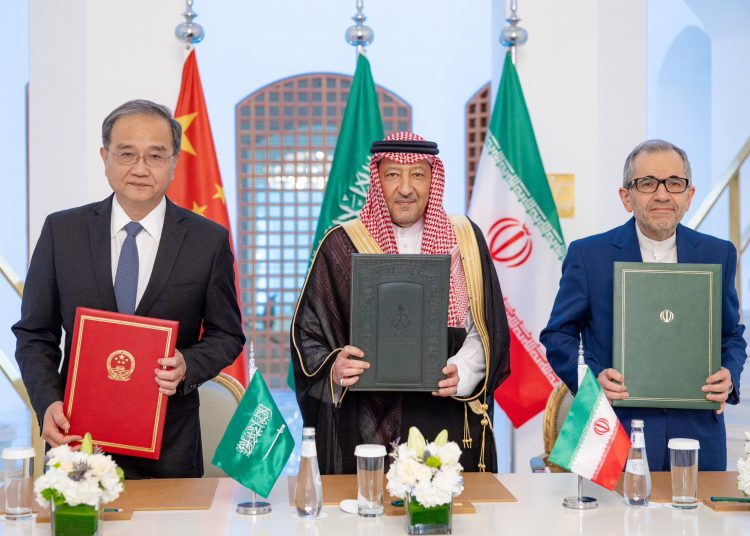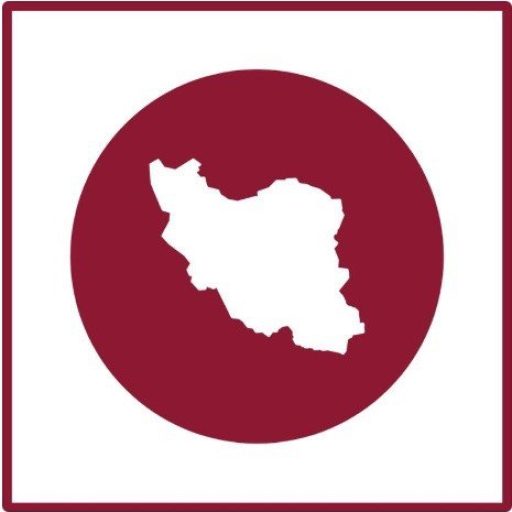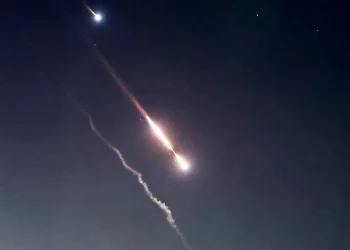Sometimes, history doesn’t just repeat itself—it surprises us. Picture this: Iran’s Deputy Foreign Minister, Majid Takht Ravanchi, walking the halls of power in Riyadh, shaking hands with his Saudi counterpart, Walid al-Khuraiji. Not too long ago, such a scene would have been unimaginable. Yet here we are, witnessing a significant thaw between two of the Middle East’s most influential—and traditionally rival—nations.
On a recent Monday, Ravanchi and al-Khuraiji sat down to hash out the future. They didn’t limit themselves to pleasantries. Instead, they dove deep into the nitty-gritty of bilateral relations—political ties, economic cooperation, commercial opportunities, and even cultural exchanges. They tackled head-on the pressing issues of Gaza and Lebanon and deliberated on strategies to ensure peace and stability in the ever-volatile Persian Gulf. This wasn’t just a diplomatic photo-op; it was a substantive effort to redefine a formerly fraught relationship.
The momentum didn’t stop there. The next day, a trilateral meeting unfolded in Riyadh, adding China into the mix. The deputy foreign ministers of Iran, Saudi Arabia, and China gathered around the table—not just to talk but to plan. Cooperation across various fields was the agenda, additionally culminating in an agreement to reconvene in Tehran in six months to assess progress. China’s role here is more than a facilitator; it’s a signal of shifting geopolitical currents, with Beijing eager to play a more active part in Middle Eastern affairs.
A joint press statement capped off the Tuesday meeting, with Iran and Saudi Arabia reaffirming their commitment to fully implement the Beijing agreement forged in March 2023. That agreement marked the starting point of this new chapter—a roadmap toward reconciliation brokered with China’s assistance. Beijing, for its part, expressed readiness to continue supporting this burgeoning rapprochement, highlighting its vested interest in a stable Middle East.
So what’s driving this unexpected dance between Tehran and Riyadh? For starters, both nations seem to recognize that their longstanding rivalry has yielded little benefit and much strife. The region is at a tipping point. Escalating tensions in Gaza, Lebanon, and elsewhere have underscored the peril of division. By mending fences, Iran and Saudi Arabia are not just altering their bilateral dynamic; they’re working on the political and security landscape of West Asia.
We’ve already seen the ripple effects. Observers note shifts in Syria, Yemen, and Bahrain—conflict zones where Iranian and Saudi interests have often been at odds. The potential for collaborative solutions is inching closer to reality. In a remarkable turn, Saudi Arabia’s Chief of the General Staff, General Fayyadh bin al-Ruwaili, visited Tehran to meet his Iranian counterpart, Major General Mohammad Bagheri. The announcement that the two countries will conduct joint naval maneuvers in the Persian Gulf, the Sea of Oman, and the Red Sea caught many by surprise. Military cooperation between these erstwhile adversaries signals a profound shift—a willingness to prioritize regional security over rivalry.
All of this unfolds against the backdrop of a changing global order. As the United States faces its own political uncertainties, with the return of Donald Trump, Middle Eastern nations are recalibrating their foreign policies. The U.S. has long been a dominant player in the region, but its influence isn’t what it used to be. Saudi Arabia has been asserting greater autonomy, exploring new alliances including with Iran, and acknowledging that their futures are intertwined.
Iran’s strategy of strengthening ties with its neighbors is paying dividends. It has made it increasingly difficult for Western powers to isolate Tehran. Saudi Arabia, eyeing ambitious domestic reforms through its Vision 2030 plan, understands that regional stability is essential for economic growth and attracting foreign investment. Both countries seem to grasp that cooperation can unlock opportunities that confrontation never will.
The high-level engagements between Tehran and Riyadh over the past year underscore the realization that diplomacy can achieve what decades of animosity have not. The joint statement from the meeting today emphasizes the necessity of ongoing dialogue, especially amid mounting tensions that threaten not just regional but global security. In an interconnected world, their collaboration—or lack thereof—has far-reaching implications.
Is this the dawn of a new era in the Middle East? Cautious optimism is warranted. The path ahead won’t be without hurdles. Deep-seated mistrust doesn’t vanish overnight, and there could be skeptics on both sides. But the steps being taken are significant. If Iran and Saudi Arabia can move beyond traditional rivalries, they could set the stage for resolving some of the region’s most intractable conflicts.
In the end, this is more than a bilateral rapprochement; it could be a potential game-changer for the West Asia. For a region that has long been defined by division and discord, the prospect of cooperation offers a beacon of hope.
We’re witnessing a moment that could redefine not just the relationship between Tehran and Riyadh but the very fabric of Middle Eastern diplomacy. It’s a reminder that in international relations, as in life, today’s adversaries can become tomorrow’s partners. And when that happens, the possibilities are endless.






